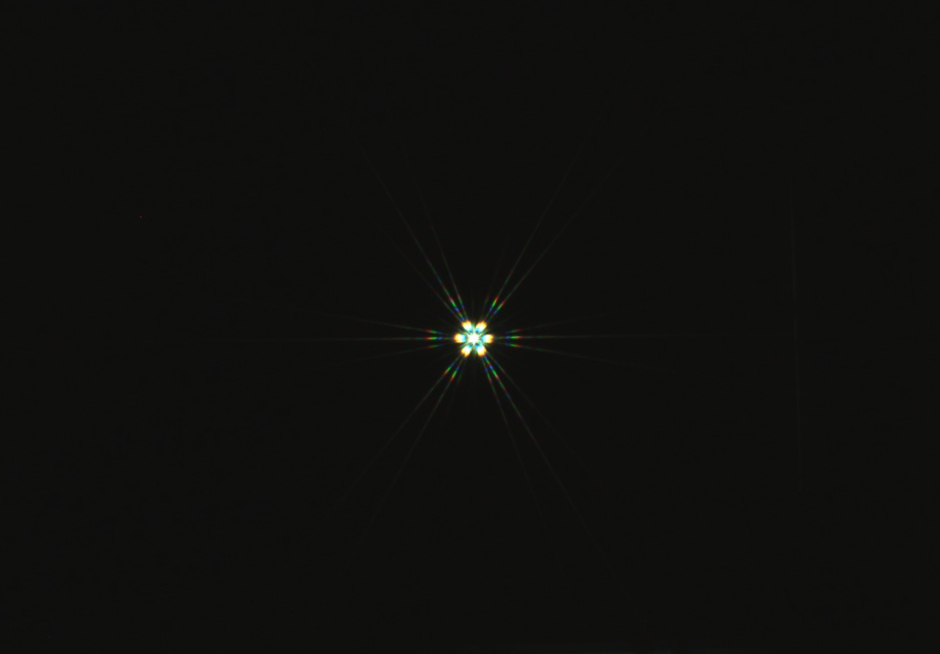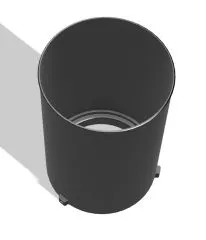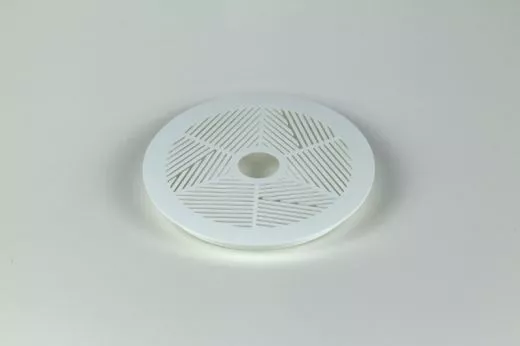- Details
- Kunden-Tipp
Produktbeschreibung
Tri-Bahtinovmaske für den Skywatcher Quattro 150P Newton
Die Bahtinov-Maske ist eines der nützlichsten Werkzeuge für die Astrofotografie. Mit ihr kann sehr einfach fokussiert werden.
Die Tri-Bahtinov-Maske hat noch eine zusätzliche Funktion gegenüber der klassischen Bahtinov-Maske: mit ihr kann das Teleskop nicht nur fokussiert sondern auch kollimiert werden.
Welche Vorteile bietet die Tri-Bahtinov-Maske gegenüber der klassischen Kollimation mittels der Airy-Scheiben-Methode?
- die Abbildung der Tri-Bahtinovmakse ist unabhängig der atmosphärischen Bedienungen. Oft kann das Airy-Scheibchen nicht klar genug gesehen werden, um eine optimale Kollimation zu erreichen.
- die durch die Tri-Bahtinov-Maske erzeugten Spikes sind für das menschliche Auge besser zu interpretieren als die Mitte eines Beugungsscheibchens. Somit kann das Gehirn diese Informationen besser verarbeiten und eine objektivere Beurteilung der Kollimation ermöglichen.
Wie funktioniert eine Tri-Bahtinov-Maske?
Bei einem perfekt kollimierten Spiegelteleskop sind die Weglängen aller Lichtstrahlen vom Primär- zum Sekundärspiegel gleich lang. Wenn jedoch die Kollimation nicht optimal ist, so haben die Lichtstrahlen unterschiedliche Weglängen und somit verschiedene Foki. Damit kann der Fokus an einer Stelle in der Bildebene erreicht werden, an anderen Stellen jedoch nicht.
Für die drei Einstellschrauben des Hauptspiegels sind quasi drei Bahtinov-Masken in eine einzige integriert worden. So werden zu den drei Hauptrichtungen der ursprünglichen Bahtinov-Maske noch jeweils zwei zusätzliche Spikes hinzugefügt, anhand derer kollimiert werden kann.
[Quelle: https://github.com/cytan299/tribahtinov]
Benutzung der Tri-Bahtinov-Maske:
- Beim Airy-Scheibchen zunächst den Schatten der Obstruktion möglichst mittig bringen. Es ist einfacher diese mittels Airy-Scheibchen zu machen als mit der Tri-Bahtinov-Maske direkt. Die Obstruktion muss in diesem Schritt aber nicht perfekt mittig sein, eine grobe Zentrierung reicht
- Die Tri-Bahtinov-Maske wird aufgesetzt, dabei werden die Markierung zu den Justierschrauben ausgerichtet.
- Mit einem Blatt Papier wird ein Bereich der Tri-Bahtinov-Maske abgedeckt, so kann herausgefunden werden, welche Kolliamtionsschraube welcher Richtung der Tri-Bahtinov-Masek entspricht.
- Jetzt werden anhand der Spikes die drei Kollimationsschrauben eingestellt.
- Eventuell muss zwischendurch nachfokussiert werden, um die Spikes wieder in den Fokus zu setzen.

In dem Bild sieht man deutlich, dass die Kollimation nicht stimmt (3 Uhr und 7 Uhr Positionen)
Software:
K. Evans hat eine Software geschrieben, welche Fokussierung und Kollimation unterstützt:
https://github.com/1CM69/Tri-Bahtinov_Grabber
Hinweise:
Die Bahtinovmasken sind für die optimale Performance speziell für jedes Teleskop einzeln berechnet.
Die Bahtinovmasken wurden von uns berechnet, designed sowie gedruckt. Wir drucken die Masken in schwarz oder weiß, je nach Verfügbarkeit. Sie sitzen absichtlich etwas lockerer, um die empfindlichen Oberflächen in der Taukappe nicht zu beschädigen.
Kunden, die diesen Artikel kauften, haben auch folgende Artikel bestellt:
 Auf Lager + Überprüfung
Auf Lager + Überprüfung Auf Lager + Überprüfung
Auf Lager + Überprüfung Auf Lager + Überprüfung
Auf Lager + Überprüfung Auf Lager + Überprüfung
Auf Lager + Überprüfung 2 Tage + Überprüfung
2 Tage + Überprüfung Auf Lager + Überprüfung
Auf Lager + ÜberprüfungDiesen Artikel haben wir am 27.09.2022 in unseren Katalog aufgenommen.
Profitieren Sie von unseren Erfahrungen als Teleskop-Spezialisten:
denn sehen heißt verstehen
in besonderen Fällen auch Vor-Ort-Service im Raum München








